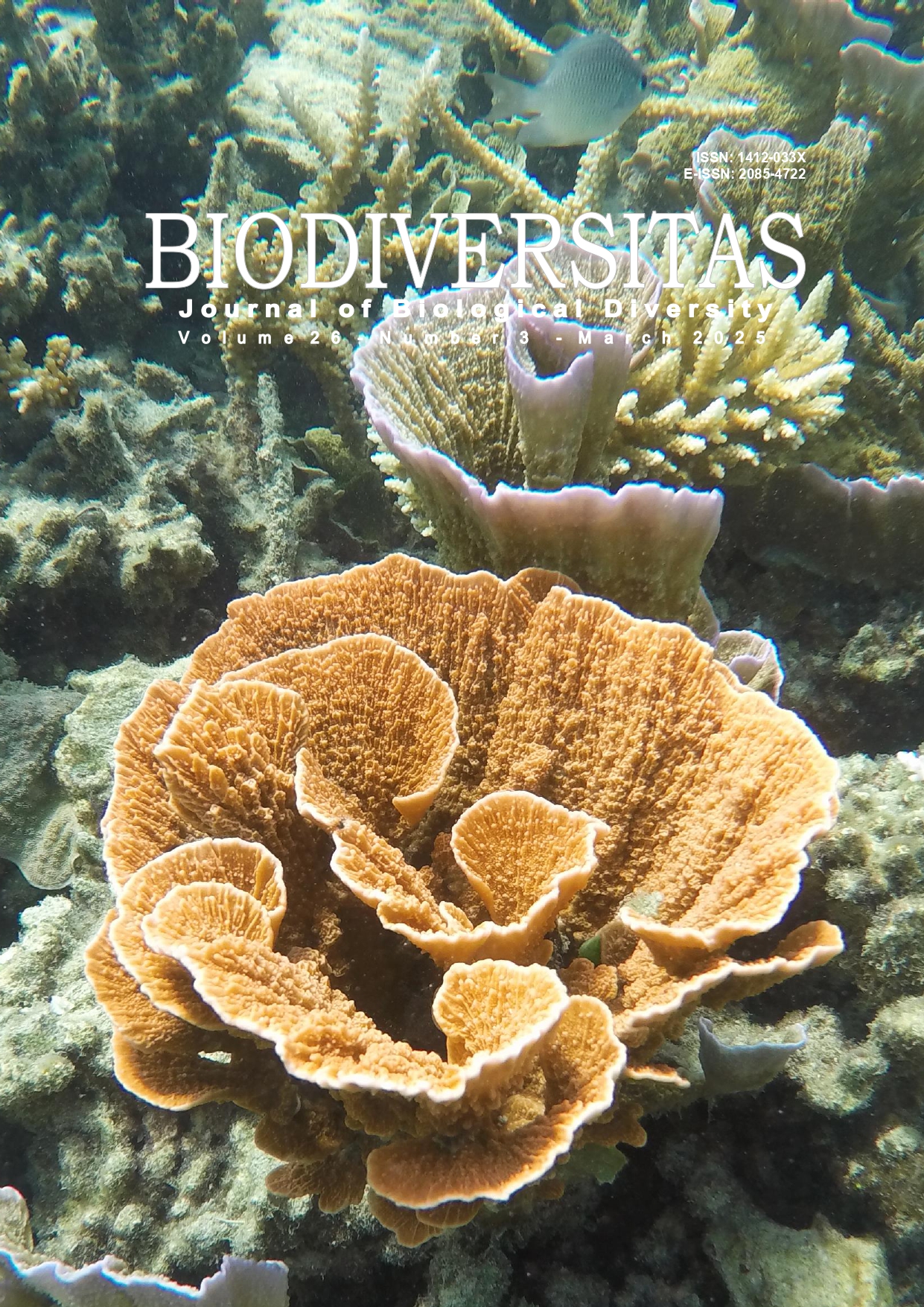Detection of microplastics in honey of stingless bee (Heterotrigona itama) and honey bee (Apis mellifera) from Malaysia
##plugins.themes.bootstrap3.article.main##
Abstract
Abstract. Ibrahim YS, Rosazan MN, Mamat MII, Anuar ST, Azmi WA. 2025. Detection of microplastics in honey of stingless bee (Heterotrigona itama) and honey bee (Apis mellifera) from Malaysia. Biodiversitas 26: 1271-1278. The demand for stingless bee honey and European bee honey has increased rapidly due to its medicinal benefits. Honey of the Indo-Malaya stingless bee, Heterotrigona itama, and European honey bee, Apis mellifera, are among the most popular bee products that Malaysians commonly consume. It has been reported that the contamination of honey with microplastics (MPs) can occur at various stages of production, from bees collecting the contaminated floral sources to the harvesting and packaging processes. With the emerging plastics pollution in the environment and concerns about potential health risks, this study aims to investigate the presence of MPs in honey samples from stingless bees, H. itama, and honey bees, A. mellifera, from Malaysia. Microplastic particles were extracted from 10 g of honey and characterized under a stereomicroscope to determine their color, size, and type. Polymer types were further identified using FTIR analysis. All honey samples from both species were found to be 100% contaminated with microplastics. H. itama honey contained a higher concentration of microplastics (8.18 ± 2.57 MPs/g) compared to A. mellifera's honey (5.52 ± 1.13 MPs/g). The MPs found in honey from both species were predominantly fibers and fragments, mostly transparent in color, with sizes ranging from 0.7 to 1.8 mm. The findings of this preliminary study are intended to provide an awareness of MPs in honey, especially in the food safety aspect, which needs a better understanding of good practices of beekeeping and processing procedures to minimize the contamination of honey.

